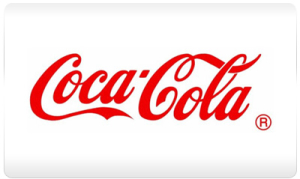Sometimes I get into the nitty-gritty of complex legal issues. Other times I go back to basics. This is one of the “Back to Basics” posts, in answer to a question I get on a regular basis: When Should I Use the Trademark Symbols?
Fortunately, there are only a few symbols you need to worry about.
™ is the common law trademark symbol. That means you don’t need the government’s approval to use it.
You can stick ™ next to your business name or logo as soon as you start using the name/logo – as long as you don’t have reason to believe someone else was using it first, or otherwise has a superior claim to the mark.
Sometimes people use the Service Mark equivalent: SM, instead of ™. That’s fine, if it’s a service-based business. But to keep it simple, it’s OK to just use ™, whether you’re providing goods, services, or a combination of both.
Now, on to the big one: ®
® is the Federal trademark registration symbol. It may only be used when the United States Patent and Trademark Office has issued you an active Certificate of Registration.
What About Other Wording?
Spoiler Alert: No other wording is necessary. The Lanham Act, which is the Federal law that governs trademarks, gives registrants the right to use the following alternatives to ® if you want: “Registered in U. S. Patent and Trademark Office” or “Reg. U.S. Pat. & Tm. Off.” But nowadays, almost everyone just uses ®.
Please don’t include “All Rights Reserved.” Years ago, that was required under copyright law, but not trademark law. Now, it’s not required at all.
Geez, Do I Have to Use These Symbols?
Not necessarily. Failure to use ® in the US doesn’t destroy your trademark registration. You’ll notice that some companies use ® religiously, and some rarely do so, even if they’ve obtained USPTO registrations.
So why does anyone use them? For one thing, it provides notice to your competitors that you’re claiming rights in this trademark, and you’ve gone to the trouble of registering the mark. That will deter some potential infringers.
Also, failure to use ® may prevent you from seeking damages in an infringement lawsuit. Lanham Act Section 29 states:
[A] registrant of a mark registered in the Patent Office, may give notice that his mark is registered” by displaying the “®” symbol (or other suitable marking) with the mark, and that “in any suit for infringement under this Act by such a registrant failing to give such notice of registration, no profits and no damages shall be recovered under the provisions of this Act unless the defendant had actual notice of the registration.
In the vast majority of circumstances, trademark infringement lawsuits never get to the stage where profits and damages are sought. Most of the time, you’ll just want to stop the other side from infringing on your rights. But if you think you might want to seek damages at some point down the road, you may as well go ahead and stick ® next to your registered mark.
If your mark is very famous, you may not feel the need to use ® – certain cases have shown that “actual notice” can be inferred even if ® is not used. Think of this along the lines of, “Duh, you should have known that COCA-COLA was a registered trademark.”

On the other hand, if your mark is new or not very well known, you’re probably better off using ® once you obtain the registration.
Is My Trademark Generic?
That’s a trick question; a generic term can’t be a trademark.
If you run the risk of your trademark becoming generic – meaning, the commonly-used term for a type of product or service – using the ® symbol is useful in reminding the public that this isn’t a generic term, it’s a registered trademark that refers to your company.
What About the Rest of the World?
In a few countries (including Chile, Costa Rica, and Nicaragua), use of a registration symbol is required for a registered trademark. Failure to use ® may result in loss of trademark registration rights.
Of course, it’s only appropriate to use the symbol if your mark is registered in that country. With online products and services, that can make things a bit complicated. If you’re doing business internationally, it’s best to seek legal advice before deciding whether or not to use trademark symbols.
Final Tip: Trademark v. Copyright
Sometimes people confuse the trademark symbols with the copyright symbol, ©. You’re not going to do that, are you? I didn’t think so.
Want more tips? Click here to download my free checklist Intellectual Property for Entrepreneurs.

